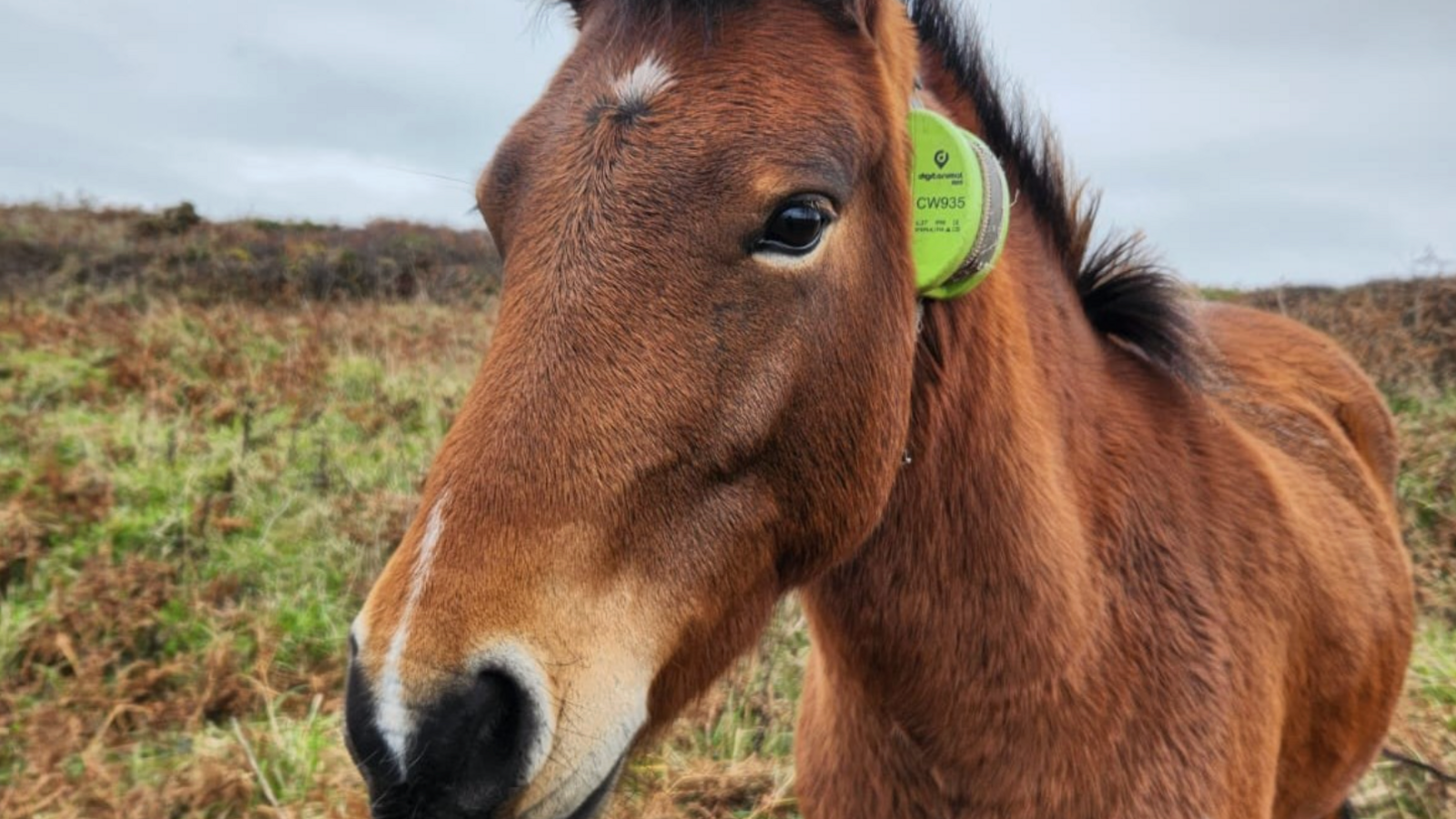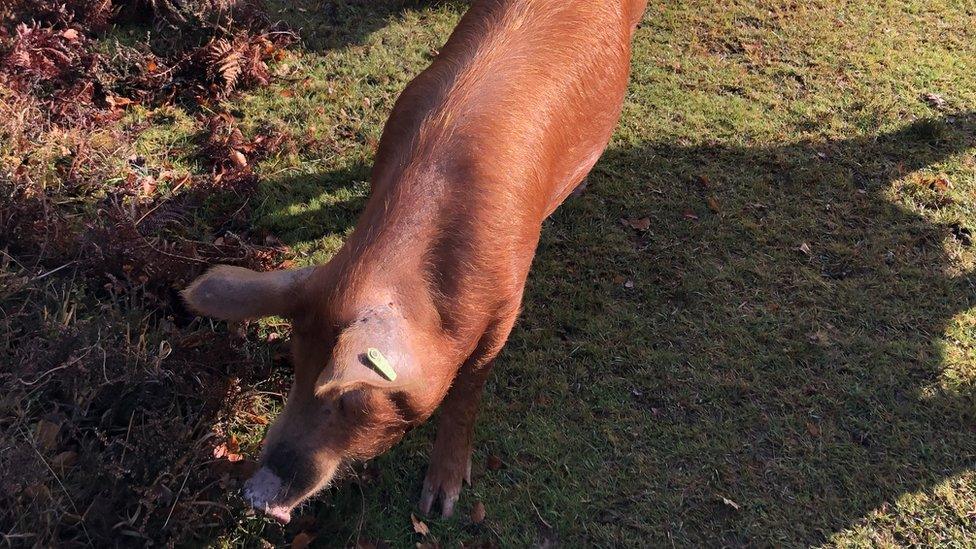GPS tags for Dartmoor ponies grazing wild areas

Grazing animals such as ponies, pictured here with a tracker, keep the land open
- Published
Dartmoor ponies roaming the hills of west Cornwall are getting a tech upgrade.
The National Trust has started fitting GPS [global positioning system] collars to some of its ponies to make sure they can be tracked across the 1,482 acres (600 hectares) of land they help manage.
Ash Pearson, countryside manager for the National Trust in west Cornwall, said the move was vital for conservation.
"We've got over 30 ponies, but we only tag the lead animals in each herd. If we know where they are, we know where most of the ponies are," he said.
The collars, which sit around the ponies' necks, send location data to a phone or computer.
They were designed to release easily so the animals did not get caught on rocks or scrub, the trust said, although it sometimes meant staff ended up tracking a collar instead of a pony.
Mr Pearson said the ponies were key to keeping Cornwall's landscape open and full of life.
"If we didn't have grazing animals, the land would close in with bramble and scrub," he said.
"We want a mix of habitats, grassland with wildflowers alongside bracken and scrub and ponies help create that."
Most of the trust's land is grazed, split roughly half and half between ponies and cattle.
The trust said it was using about six trackers because they were expensive, but that was enough to monitor the herds.
The ponies graze in rotation, moving from site to site once they have done their job.
"They trample bracken, nibble new shoots, and keep grasses short so wildflowers can bloom. That supports pollinators and the whole food chain," Mr Pearson added.
Follow BBC Cornwall on X, external, Facebook, external and Instagram, external. Send your story ideas to spotlight@bbc.co.uk, external.
Related topics
- Published12 November 2020

- Published29 May

- Published10 March 2011